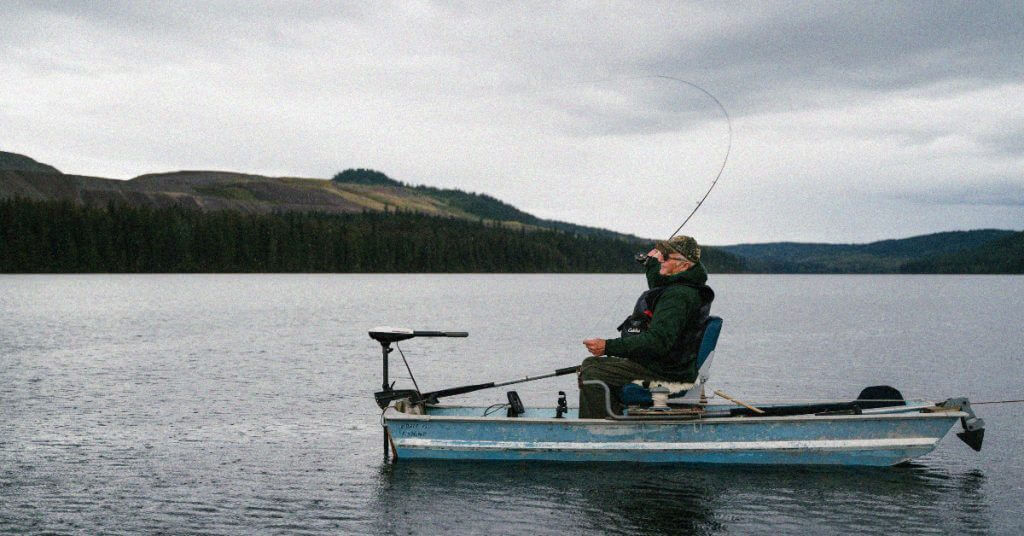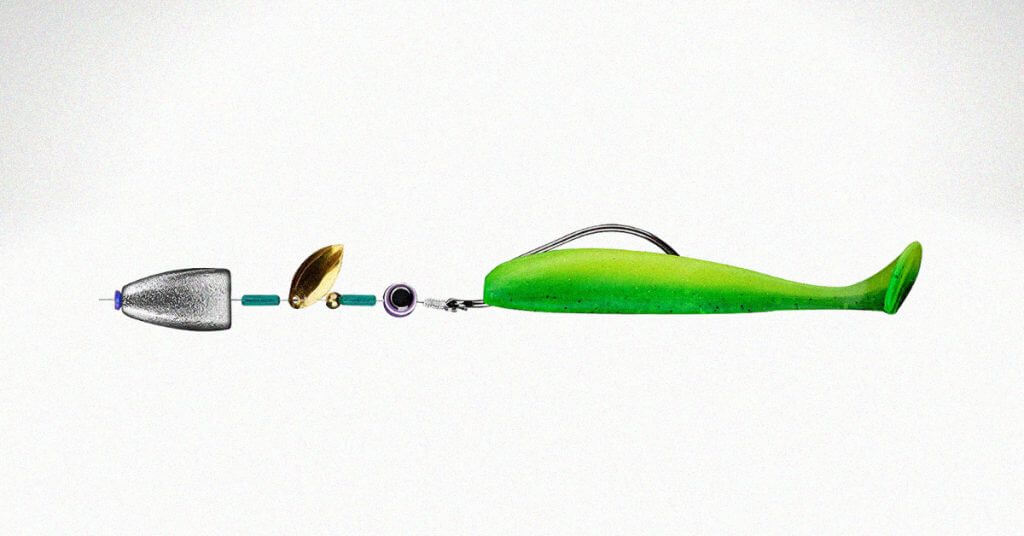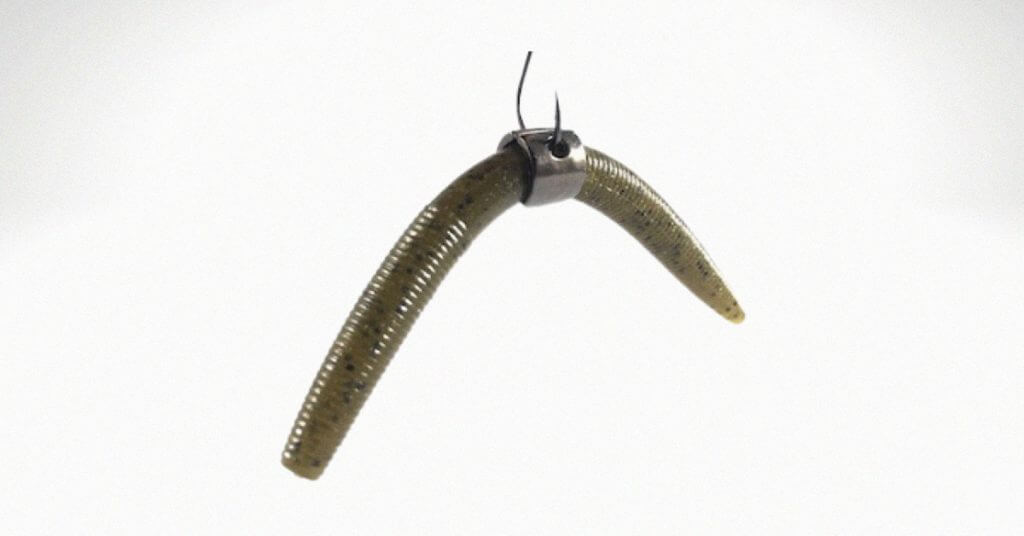Anglers.com content creator Wes Littlefield tests out the Ned Rig in this YouTube Video!
Many people ask how to fish a ned rig for bass as this technique has become increasingly popular in fishing. I love it because it is so versatile, and you can use it to catch virtually any fish.
Ned rigs typically consist of a jighead and a soft plastic lure that looks like a crayfish or a worm.
The unique shape allows for an enticing wiggle when the rig sits on the bottom or is reeled in, making it attractive to many different types of fish, not just bass.
In my opinion, it will be one of the best techniques and bass rigs to use in tough conditions. Its subtle presentation allows anglers to target wary fish without spooking them.
With the correct bait size and jig head selection, you’ll be able to entice more strikes and increase your chances of success when fishing.
What really makes this lure stand out is its simplicity; it’s easy to cast and fish, giving you more time to focus on finding the right spots and enjoy catching more bass.
Table of Contents
What is a Ned Rig?
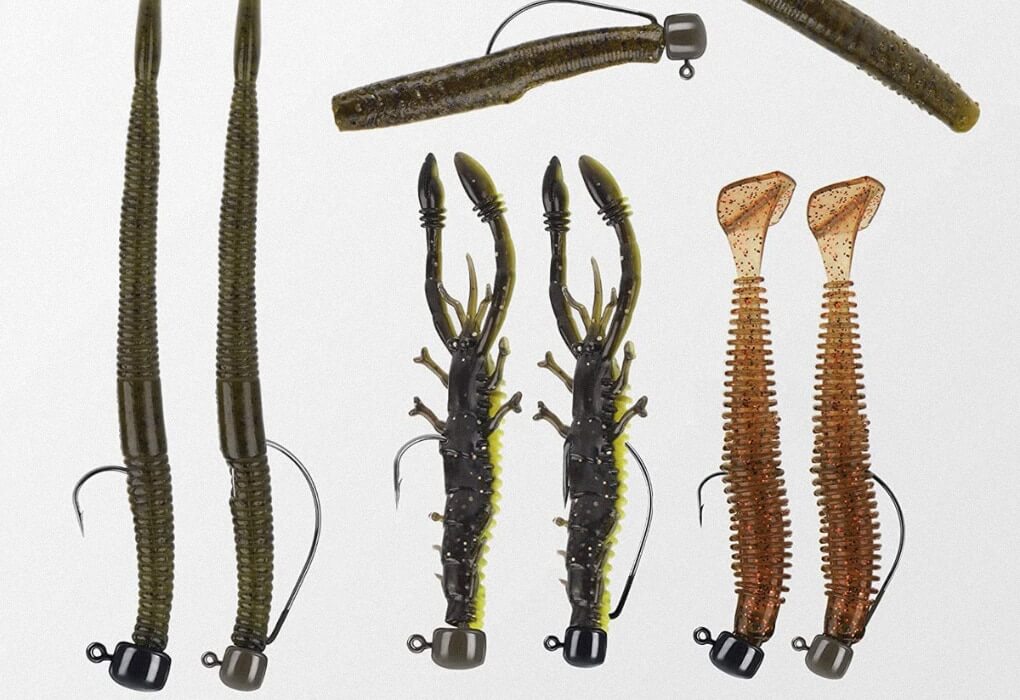
A Ned Rig fishing lure is a finesse fishing technique, similar to a shaky head, that involves using small plastic worms, craws, or creature baits. The method is intended to catch the fish’s attention in a stealthy way.
The process was designed and tested by Ned Kehde, providing an altered approach to offshore bass fishing.
It typically involves making long casts with bait action imparted by the angler in the form of subtle hops and twitches.
It utilizes a mushroom head jig with an elongated body resembling a small stick bait. This shape allows for easy and subtle presentations.
Some of these baits also have softer tails made of plastic or rubber that give them extra movement underwater, making them even more appealing to fish.
What’s the Best Equipment to Use for a Ned Rig?
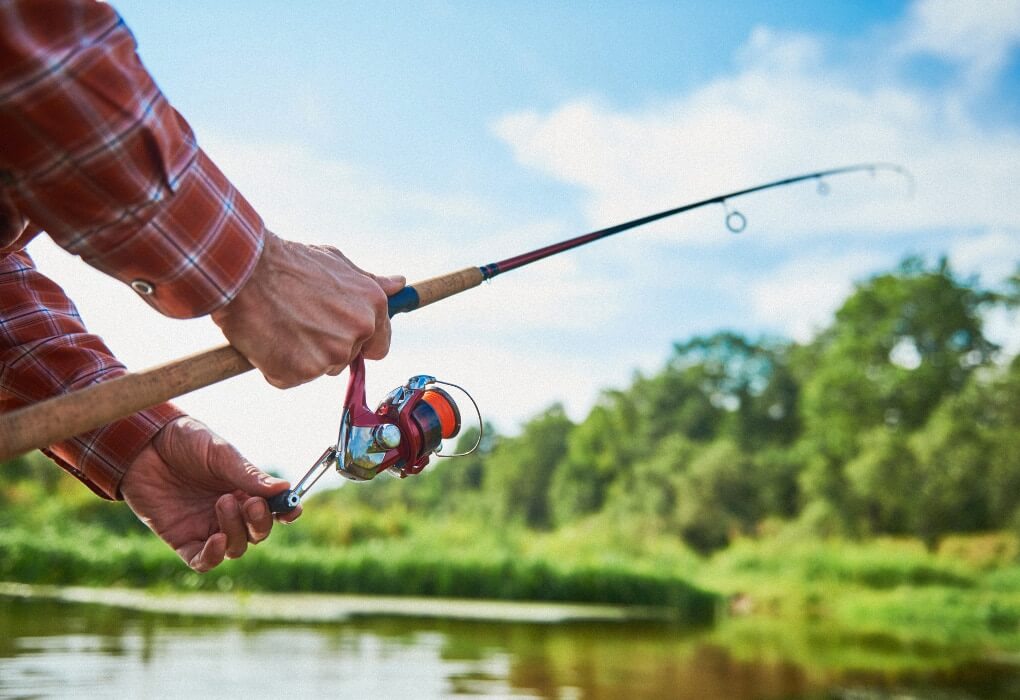
To use a Ned Rig, you’ll need a few essential items.
First, you’ll need your chosen lure, such as a soft plastic worm or craw in the right size and color.
Second, you’ll need some 1 to 1/0 jigheads with a mushroom-style head. The head must be light enough to allow for subtle movements when twitching the bait.
Lastly, you’ll need a 4-8-pound test fluorocarbon leader and your favorite spinning reel spooled up with a 10-12-pound braided line.
Best Ned Rig Hook to Use
When fishing a Ned Rig, use smaller hooks, which help hide the hook in the bait, so the fish don’t notice it until they have already bitten.
For a Ned Rig, you should use an offset hook—these are hooks with a 90-degree bend. Offset hooks are perfect for Ned Rigs because they help keep your bait from sliding off when you set the hook.
It is best to use light wire #1 or #2 hook sizes. These hooks are designed specifically for finesse baits and will help them stand up in the water, which is essential to catch fish on a Ned Rig.
With the right hook size and construction, you can ensure you’ll get more bites and have a better chance of catching your target species.
Jigheads like the Z-Man Finesse ShroomZ are a popular choice for rigging up a Ned Rig.
Ned Rig Baits
When it comes to picking bait for your Ned Rig, there are several options to choose from, but stick baits and worms (soft plastics) work best with this rig since they are able to move and undulate in the water more naturally than other types of lures.
I like to keep my color selection simple, with green pumpkin, red and orange, or black and blue. If the water is clear, I grab a green pumpkin soft plastic.
If the water is murky, I use black and blue plastics. In the spring, I like to use red and orange to mimic crayfish.
One popular option is the Yum Dinger worm, designed specifically for use with the Ned Rig technique. If desired, this rig can also use other baits, such as grubs and tube jigs.
The z-man finesse trd is also one of the best baits to use. This stick bait was explicitly designed for the Ned Rig, and its ElaZtech material makes it soft and buoyant.
Since its introduction, the Finesse TRD has been one of my go-to baits and many other anglers, making it an essential asset in any tackle box.
Ultimately, when fishing with a Ned Rig, it is best to use an elastic bait like the Z-Man baits as they are highly buoyant and won’t roll over on the bottom, allowing for better presentation and action.
Plastisol baits can also be effective but should be used in other techniques where they can float freely or suspend at certain depths.
Best Rod for the Ned Rig
When it comes to selecting your rod for the best ned rig setup, there are several things you should keep in mind.
First and foremost, go with a spinning rod rather than a baitcaster, as they are easier to cast using the light line and lure.
Baitcasters don’t typically provide enough accuracy or sensitivity when casting light plastics like those used in the Ned Rig.
Instead, most anglers prefer to use either a medium-light spinning rod or a medium spinning rod with either a 6 or 8-pound test line.
The medium-light option provides more sensitivity while allowing you to cast lighter baits accurately and far distances.
The medium option is great if you need more power on your hooksets and increased distance when casting heavier-weighted Ned Rigs.
If you really want to optimize your fishing technique with a ned rig then I’d suggest getting a dedicated rod for this.
We have an entire article dedicated to the best ned rig rods on the market if you want to learn more.
Best Reel Size for the Ned Rig
The size of the reel also matters when fishing the ned rig.
I prefer to use a 2000 or 3000-size reel because it offers enough strength to reel in a big bass, but it’s not so bulky that I get tired from casting it all day.
These reel sizes allow you to set the perfect amount of drag, so you get a good hookset without snapping your line.
How to Fish with a Ned Rig

The Ned rig is a finesse rig that is a simple but effective technique that bass anglers use to catch largemouth and smallmouth bass, walleye, and other fish species.
The lure is then cast out and retrieved slowly along the bottom of the lake or river.
When it comes to fishing with a Ned rig, you should find a spot on the water that’s weedless or without many obstacles.
This is because the key to Ned rig fishing is moving the lure slowly along the bottom of the lake, so you want to ensure that your line isn’t getting snagged on brush or weeds as you retrieve it.
Slow Retrieve
Once you have found a promising area, cast your lure out and let it sink to the bottom. Then start retrieving your line slowly while keeping an eye out for any bites or strikes from fish.
You want to feel the rig hitting bottom regularly. This technique works best with a soft plastic craw or swimbait.
If you feel something tugging on your line, set the hook by quickly jerking your rod up and reeling in any slack line as fast as possible. This will ensure that you have securely hooked into whatever fish has taken your bait.
Hopping
Changing up the slow retrieve with a few hops is sometimes what it takes to trigger a bite.
A fish might have been sitting there staring at your Ned rig when all of a sudden, it hops and seems like it’s getting away, making the bass instinctively strike.
To hop it, give your rod tip quick pops and let it sit for a five-count or longer. Then reel up the slack and do it again.
Dragging
You can also slowly drag the Ned rig across the bottom. This will stir up silt and get any fish’s attention in the area.
I prefer to drag it using my rod tip and then reel up the slack as I let it sit for a second. Craws and stick baits work well for this technique.
Dead Sticking
Another Ned rig fishing method is to cast your bait out into the water and let it sink slowly. Once your bait has reached the bottom, all you have to do is wait for a bite.
Many anglers refer to this style of fishing as a “deadstick” technique since you are essentially sitting back and waiting for the fish to strike.
This technique is why the Ned rig is often called a “do nothing bait.” A short Senko is often the best plastic to rig for this technique.
Frequently Asked Questions About Neg Rig Fishing
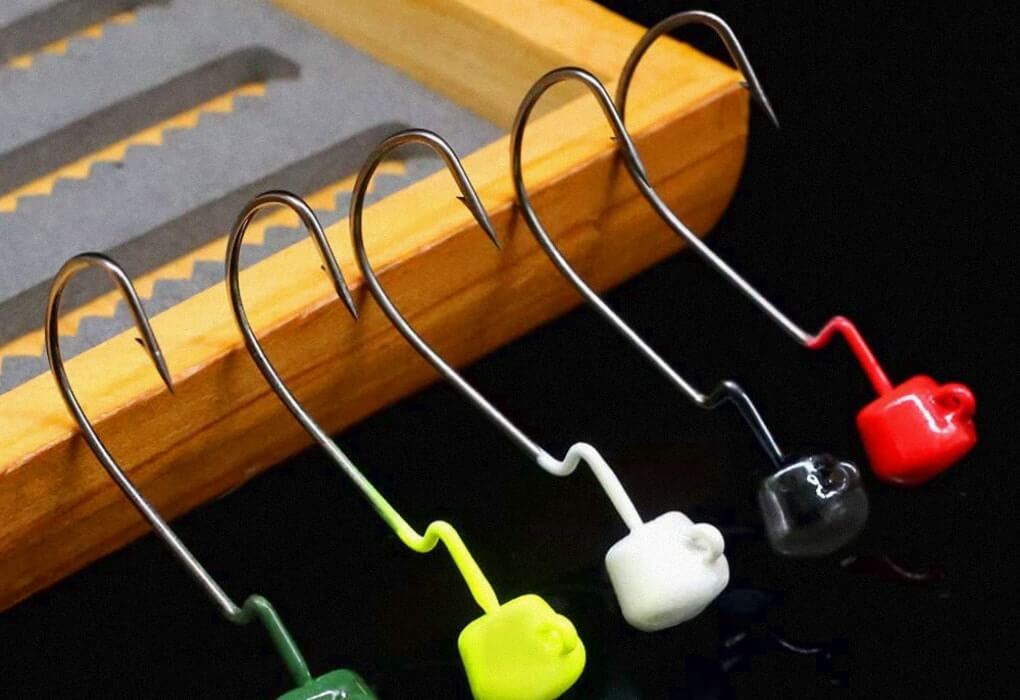
Are Ned Rigs Good for Bass Fishing?
Yes! Ned rigs are good for bass fishing.
This finesse technique involves using small plastic worms, craws, or creatures paired with a light mushroom-style head.
It’s become one of the most popular techniques for catching bass in fisheries worldwide due to its simplicity and effectiveness.
What Size of Hooks Should I Use on My Ned Rig?
The size of hooks you should use for a Ned rig ranges from 1 to 1/0 with a 1/16th to 3/32nd ounce jig head.
When Should You Use a Ned Rig?
You should use a ned rig when the fishing is tough and in water without many obstacles along the bottom, such as logs and weeds.
Ned rig fishing is very similar to drop shot fishing, a popular finesse angling technique that utilizes thin-wire hooks and lightweight sinkers to help plastic baits descend in the water.
I’ve found that the ned rig is best used in cold water.
The slower presentation of the lure allows you to reel it in with minimal effort, making it the perfect choice for days when fish are sluggish and unresponsive.
Since its presentation is very subtle, you can draw strikes from warier fish that may be reluctant to strike more aggressive displays.
Overall, the Ned rig can be an excellent tool for anglers looking to catch fish in various conditions and is especially useful for targeting pressured or warier species of fish.
Additional Ned Rig Fishing Tips for Bass

While ned rig bass fishing is a great way to catch bass, some mistakes can be made if you’re not careful.
Here are some additional tips to help you avoid common pitfalls and get the most out of your next Ned Rig fishing trip:
- Make sure to use the correct size jig head for your bait. If it’s too heavy, it will sink too quickly and miss out on strikes from fish that may have been interested in it.
- Don’t be afraid to experiment with different colors and sizes of baits. Bass can be picky eaters, so having a variety of options can help you find what they’re biting on that day.
- When setting the hook, remember that the Ned Rig is a finesse technique, so don’t jerk too hard, or you may pull the bait out of their mouth before they have time to swallow it.
- Pay attention to where you cast your line—target areas where bass tends to congregate, like points, drop-offs, or rock piles.
- Don’t forget about the scent! Adding a scent to your bait can make all the difference when trying to attract fish in murky water or during low-light conditions like dawn and dusk when visibility is reduced.
Final Thoughts
The most important thing to take away when it comes to how to fish a ned rig for bass is that it’s an excellent way to catch bass in less-than-ideal conditions.
The good news? It’s relatively easy to learn how to use.
By following the tips and techniques, you’ll be well on your way to joining the legions of other Ned heads on the lake.
If you ever need a refresher or want more information on other bass fishing topics, check out our ebook, and always know the right lure to through in any situation.

